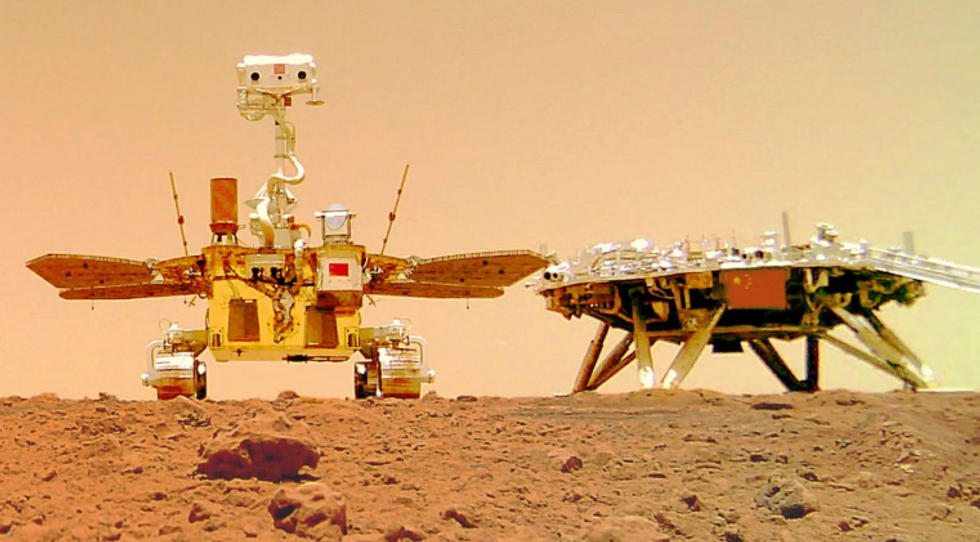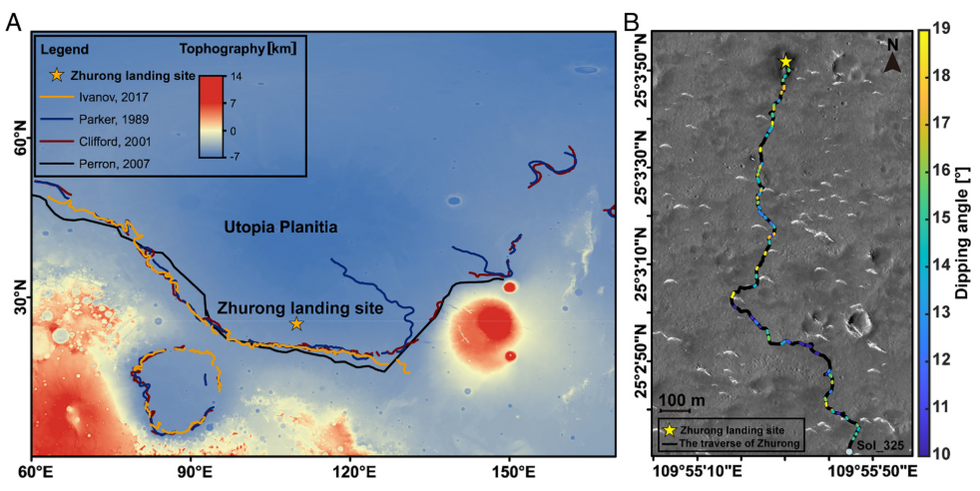Andy Lound says man could land on Mars
GB News
The rover travelled 1.2 miles at right angles to escarpments believed to be remnants of an ancient shoreline
Don't Miss
Most Read
Trending on GB News
New evidence from China's Zhurong rover suggests Mars once had Earth-like beaches with gentle waves and sandy shores approximately four billion years ago.
Scientists using ground-penetrating radar have discovered hidden layers of rock beneath the Martian surface that point to the existence of an ancient ocean.
The findings, published in the Proceedings of the National Academy of Sciences, indicate that the now-cold and arid planet once hosted conditions similar to Earth's coastal regions.
The rover's radar explored to a depth of about 80 metres, revealing thick layers of sloping rock beneath the Martian surface.

The rover's radar explored to a depth of about 80 metres
GETTY
These rock layers pointed upward at a 15-degree angle towards what scientists believe was an ancient shoreline.
Analysis showed the particles locked within these rock layers matched the size of sand, consistent with beach deposits found on Earth.
Scientists believe rivers carried sediment to this ancient ocean, which was then distributed by waves along its beaches over millions of years.
Professor Benjamin Cardenas of Pennsylvania State University, who co-authored the study, said: "We found evidence for wind, waves, no shortage of sand - a proper, vacation-style beach."
MORE LIKE THIS:
"Shorelines are great locations to look for evidence of past life," he added. "It's thought that the earliest life on Earth began at locations like this, near the interface of air and shallow water."
China's Zhurong rover landed in the Utopia Planitia region of Mars in 2021 and operated for one year.
The rover travelled 1.2 miles at approximately right angles to escarpments believed to be remnants of an ancient shoreline.
These features date back about four billion years, when Mars had a thicker atmosphere and warmer climate that could support liquid water.
Images taken by the Viking spacecraft in the 1970s first sparked theories about Mars having an ancient ocean.
These spacecraft captured what appeared to be a shoreline encircling much of the northern hemisphere, alongside a depression suggesting an ancient seabed.
However, the discovery of an irregular shoreline, varying in height by up to 10 km, initially cast doubt on the ocean theory.
Scientists had questioned this irregularity, as shorelines typically maintain a consistent level.
Professor Michael Manga and his team believe they can explain the uneven shoreline mystery through Mars' Tharsis region, home to our solar system's largest volcanoes.
This "Tharsis bulge" caused the planet's surface to rise, altering Mars' rotation around four billion years ago.
"Because the spin axis of Mars has changed, the shape of Mars has changed. And so what used to be flat is no longer flat," explained Professor Manga from the University of California, Berkeley.
Professor Manga, who co-authored the paper, emphasised the scientific validity of their findings regarding the ancient beach formation.

Zhurong rover landing site and proposed shorelines in Utopia Planitia
HiRISE: NASA/JPL/University of Arizona
"These features have both the right orientation and the right slope to support the idea that there was an ocean for a long period of time to accumulate the sand-like beach," he said.
The radar analysis revealed particle sizes consistent with beach sand, further strengthening the evidence for Mars' ancient coastal environment.
Scientists believe much of Mars' ancient water may have escaped into space alongside its atmosphere as the planet cooled.
A substantial amount likely travelled underground, where it remains trapped today either as ice or combined with rocks to form new minerals.







